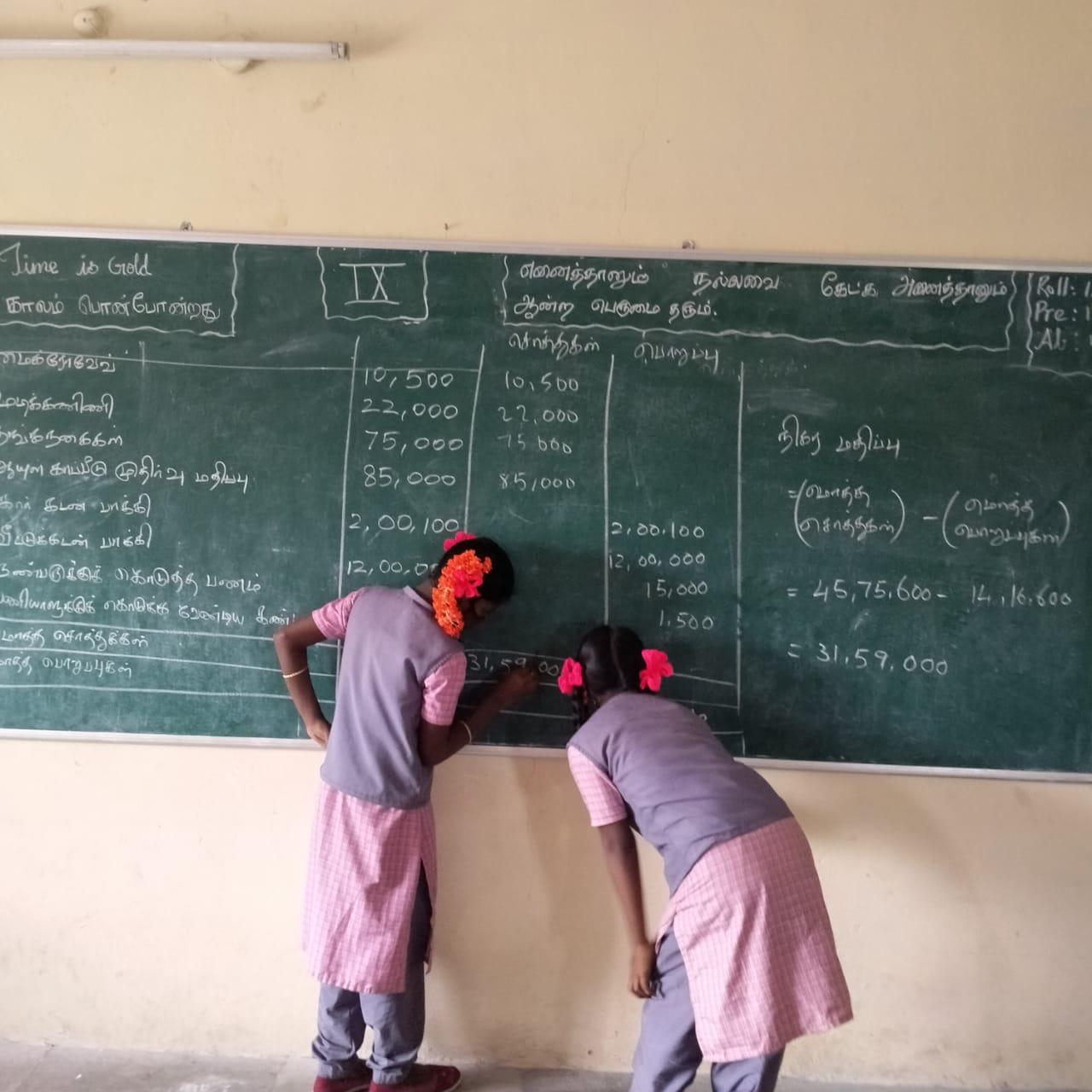Coherent vision, reformed processes, and accessible products in financial education will create money-smart individuals.
Financial literacy must rank at the top among the many critical skills fundamental for a fulfilling life but still largely outside the ambit of our education system. More often than not, we learn concepts like saving, budgeting, and wealth creation through informal channels like our parents. Worse still, misinformation could turn young adults into financial profligates. A National Centre for Financial Education (NCFE) survey states that only 27% of adults in India are financially literate. Thus, the time has come to institutionalize financial education (FE) in our schools.
Towards this end, under the District Development Internship Program (DDIP) of the Tiruvallur collectorate, Tamil Nadu, the internship team, guided by the Chief Educational Office, embarked on a pilot project to introduce FE in 14 government schools (one school per block). We partnered with NCFE, a government-backed entity, to train teachers who trained the children. The three-week campaign was undertaken in two phases. The first phase involved training the school teachers by NCFE-empanelled experts and the second phase, where teachers transmit their knowledge to students, was further divided into theory and practical sessions.
Novel teaching methods being deployed in a theory session
While the theory sessions introduced the basics of banking, budgeting, insurance, power of compounding etc. using comics created by the Reserve Bank of India, the practical sessions prodded the students to apply the concepts in case studies, like budgeting for an upcoming family tour.
The children received the one-off campaign well and were excited to perform activities that mirrored real-life demands, like managing their monthly family budget. At the end of three weeks, about 30 teachers and 840 students were exposed to information that would help improve their money management.
Learning to prioritize between needs and wants
What merits our attention, however, are the multiple challenges during the implementation, which provide insights for a potential nationwide rollout of FE.
First, not all resources are available in the regional languages. The workbooks designed by NCFE for classes VI to X and its flagship National Financial Literacy Assessment Test (NFLAT) are available only in English and Hindi, limiting the scope of the geography of implementation. For the DDIP campaign, Securities and Exchange Board of India’s modules in Tamil proved useful. Second, most of these activity-based modules are incomplete, as they do not come with a solution handbook. This seemingly minor lapse made it hard for the teachers to familiarize themselves with a topic outside their expertise. Third, despite evidence that monetary behavior is established by the age of seven, NCFE has de facto disregarded this age cohort (primary school children). Fourth, currently, FE is the preserve of those who are aware enough to ask for it. This demand-driven model has led to private schools constituting a major chunk of NCFE’s customers, leaving behind government school children.
For a financially aware and empowered India, we must revisit the vision, processes, and products currently guiding the financial education ecosystem.
- Vision:
- While the National Strategy for Financial Education 2020-25 includes young children in its target audience, the National Education Policy 2020 makes only a passing mention of financial literacy under the “adult education” section, necessitating a coherent vision for FE.
- Not only is there a need for coherence in the vision, but also it must be rooted in science. The Heckman curve illustrates that the earlier the investment in human capital development, the greater the returns. For instance, Australia has integrated FE with the school curriculum for children as young as five. Targeting the children of primary schools is thus of paramount importance.
- Processes:
- We must pivot from a demand-driven delivery of financial education to a supply-by-default model. Mainstreaming FE would not be possible without the states taking the lead, as they directly control 68.5% of all schools present in India. In the USA, 21 states have legislated to teach FE in their schools mandatorily. A recent positive development is that all the state boards barring three, have agreed to work with the RBI to integrate FE into their curriculum.
- Products
- As the national lead agency, NCFE’s products will be more accessible if they are available in all official languages (along with solutions to problems) and are more culture-specific than they are currently. Greater collaboration between the State Council for Educational Research and Training (SCERTs) and NCFE can help curate customized content taking local financial narratives into account. For example, in Tamilnadu, the peppy lines “varavu ettanna selavu pathanna, adhigam rendanna kadaisiyil thundhanaa” (8 annas in, 10 annas out! Two in deficit leaves your life in doubt!) from the cult movie, Bama Vijayam, can be effectively used to illustrate that one must live within their means!
Equipping our students with FE is extremely relevant in an era where India’s Fintech sector offers an array of innovative investment avenues. A financially literate society can also keep many social ills like online gambling addiction and domestic violence at bay. Coherent vision, reformed processes, and accessible products in FE will create money-smart individuals whose decisions will ultimately benefit the nation!
Read more: Challenges for India’s G20 Presidency
Post Disclaimer
The opinions expressed in this essay are those of the authors. They do not purport to reflect the opinions or views of CCS.






